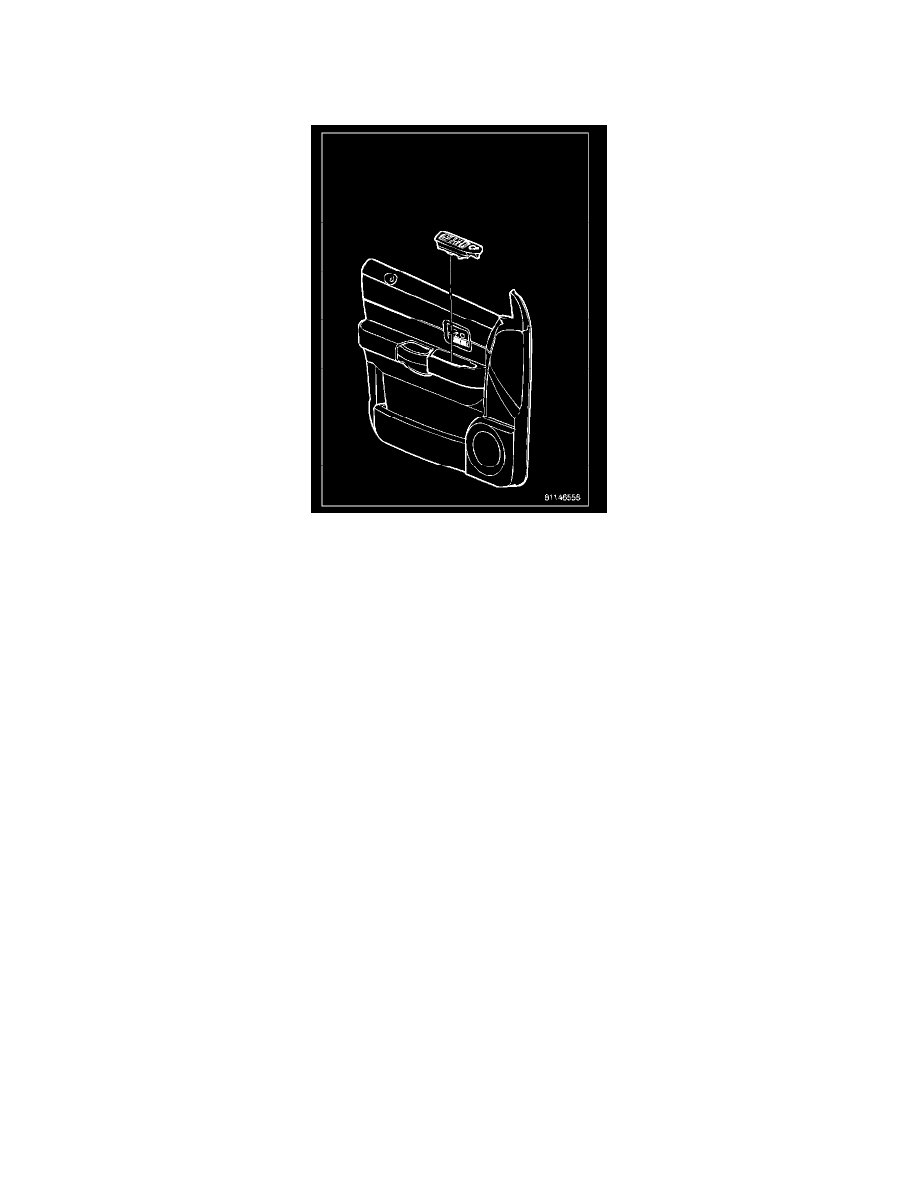Raider V6-3.7L SOHC (2006)

Power Door Lock Switch: Description and Operation
SWITCH - WINDOW/DOOR LOCK
DESCRIPTION
A window/lock switch located in each front door trim panel. The driver's side window/lock switch includes the following:
-
Lock Switch - A two-way, momentary, resistor multiplexed switch to control the power lock system.
-
Window Lockout Switch - A two-way, latching, push-button switch allows the vehicle operator to lock out the window switches on each
passenger door so that the passenger door power windows may be operated only from the drivers door switch.
-
Window Switches - A two-way, momentary window switch for the driver side front door also has a second detent in the Down direction and
internal circuitry to provide an Auto-Down feature for the driver side front door window. In addition to the window switch for its own door, the
window/ lock switch houses individual switches for each passenger door window.
The passenger side window/lock switch includes the following:
-
Lock Switch - A two-way, momentary, resistor multiplexed switch to control the lock system.
-
Window Switch - A two-way, momentary window switch for the passenger side front door.
OPERATION
The driver side window/lock switch combines a lock switch, a driver window switch with an Auto-down feature, master switches for each passenger door
window, and a window lockout switch.
Lock Switch
The lock switch circuitry is connected in series between ground and the driver door switch mux input of the instrument cluster. Each lock switch position
(Lock, Unlock, and Neutral) provides a different resistance value to the instrument cluster input, which allows the instrument cluster to sense the switch
position. Based upon the lock switch input, the instrument cluster controls the battery and ground feed outputs to the individual lock motors to lock or
unlock the door latches. The Light-Emitting Diode (LED) in the lock switch is connected to battery current through the window circuit breaker in the
Integrated Power Module (IPM) on a fused ignition switch output (run-acc) circuit so that the switch will be illuminated whenever the ignition switch is
in the On or Accessory positions.
Window Switches
The window switch circuitry is connected to battery current through a circuit breaker in the Integrated Power Module (IPM) on a fused ignition switch
output (run-acc) circuit so that the windows will operate whenever the ignition switch is in the On or Accessory positions. Each two-way, momentary
master passenger window switch in the window/lock switch provides battery current and ground to the individual window switches on each passenger
door so that the window switch controls the battery current and ground feeds to its respective window motor. The switch for the driver side front door
window includes an auto-down feature. When this switch is depressed to a second momentary detent position and released, the driver door window is
automatically operated through an internal circuit and relay to its fully lowered position. The Auto-down event is cancelled if the switch paddle is
depressed a second time in either the Up or Down direction. When the two position window lockout switch in the window/ lock switch is depressed and
latched in the lockout position, the battery current feed to each of the individual passenger window switches is interrupted so that the passenger door
